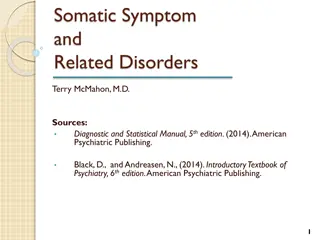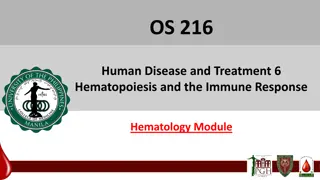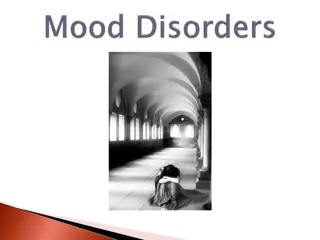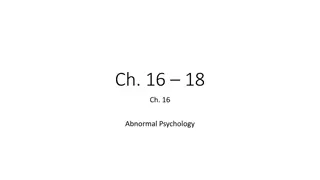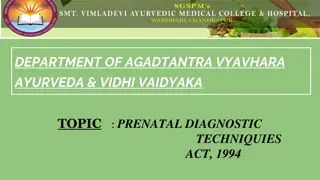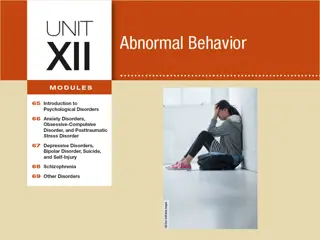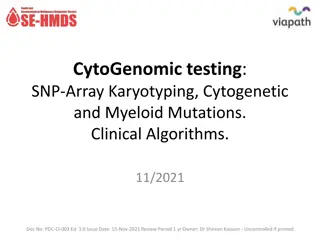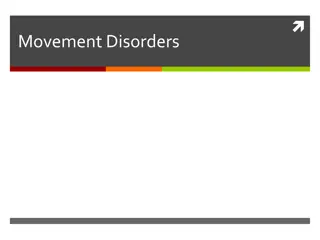Diagnostic Approaches in Hematologic Disorders: A Comprehensive Overview
Explore the diagnostic considerations for multiple myeloma, monoclonal gammopathy of undetermined significance (MGUS), and related conditions, including indications for serum protein electrophoresis (SPEP) and free light chain (FLC) testing. Learn when not to order SPEP and FLC, and consider various clinical scenarios that may impact diagnostic decisions. Discover key learning objectives and expert insights on mitigating bias in hematologic evaluations.
Download Presentation

Please find below an Image/Link to download the presentation.
The content on the website is provided AS IS for your information and personal use only. It may not be sold, licensed, or shared on other websites without obtaining consent from the author. Download presentation by click this link. If you encounter any issues during the download, it is possible that the publisher has removed the file from their server.
E N D
Presentation Transcript
Fractionated BDD 2 MGUS & Myeloma
Presenter Disclosure Faculty: Mark Kristjanson Relationships with commercial interests: none
Mitigating Potential Bias Not Applicable
Learning Objectives 1. List the indications for SPEP & FLC 2. Adapt the diagnostic approach for patients with such indications to the clinical context
When not to order an SPEP and FLC When a putative CRAB criterion (or neuropathy, or cardiomyopathy, etc.) is better explained by something else. For example
When not to order an SPEP and FLC A 65 year old hypertensive female with type II DM x 17 years has a creatinine that has risen from 93 to 118 over the past three years Microalbuminuria has progressed A1c ranging 8.8% 9.4% over that period BPs ranging 128 144/88-94
When not to order an SPEP and FLC That same diabetic patient presents at age 66 with mildly painful bilateral foot tingling paraesthesias The tingling is relieved with amitriptyline 10 mg h.s. Nerve conduction studies confirm a peripheral neuropathy consistent with a diabetic neuropathy
Would you order an SPEP and FLC? A 59 year old female who is 10 years post - menopause chronically loose bowels (3-4 movements per day) Presents with T7 vertebral body compression T-score on BMD -2.6 DDx?
Would you order an SPEP and FLC? Diarrhea from AL amyloidosis of GI tract? Celiac? Other malabsorption syndromes? Osteoporosis from multiple myeloma? Primary hyperparathyroidism? Hyperthyroidism?
Osteoporosis Canada says: if osteoporosis (i.e. T-score 2.5), then
Would you order an SPEP and FLC? Celiac screen & IgA level CBC Calcium, albumin, alk phos (+/- iPTH) creatinine Vitamin D SPEP & FLC TSH
Captain Crunch 54 year old male Presents with mid-back pain x three weeks Came on while mowing the lawn
Captain Crunch Your differential? What questions do you have for Mr. Crunch? No previous similar pain No trauma Mild pain when lying still Marked exacerbation with truncal movements
Captain Crunch No fever No limb weakness or sensory loss No bladder or bowel symptoms Acetaminophen 1 g QID plus ibuprofen 400 mg TID bring pain from an 8 to a 5 on 10.
Captain Crunch On examination: Painful limitation of forward flexion of spine Sore in midline below inferior scapular angles Punch tenderness at ~T12. Motor & sensory exams lower limbs normal.
Captain Crunch Investigations? Plain radiographs of spine: osteopenia; 25% loss of vertebral body height at T12 Anterior wedging Next steps?
Osteoporosis Canada says: if osteoporosis (i.e. T-score 2.5), then
Captain Crunch Hb 144 g/L MCV 84.2 fL Creatinine 73 umol/L Ca++ 2.70 mmol/L (Corrected 2.73) Alk phos 144 TSH 3.4 mU/L
Captain Crunch Next steps? iPTH (re: mild hypercalcemia) SPEP & FLC BMD
Captain Crunch iPTH 12 ng/L (N: 17 60) T-score -2.2 SPEP: IgG monoclonal protein 22 g/L FLC: Kappa 22.7 mg/L; Lambda 19.7 mg/L; FLCR 1.15
Captain Crunch Diagnosis? Myeloma Next steps? Skeletal survey Refer to Hematology
Monoclonal Protein identified on SPEP or FLC Are CRAB features present?** C Ca2+ > 2.8 R renal :Creatinine > 177 or eGFR < 40 ml/min A anemia: Hemoglobin less than 100 g/L B bone: lytic bone lesions Assess for CRAB features, order: CBC Creatinine Ca2+ For IgM subtype, assess for lymphadenopathy and splenomegaly Refer to Hematology yes **attributable to plasma disorder No CRAB features Are there any of the following high-risk features? Non-IgG, Non-IgM monoclonal protein Monoclonal protein > 15 g/L Kappa or Lambda FLC > 100 mg/L FLC ratio < 0.125 or > 8.0 Order skeletal survey yes no See MGUS follow-up algorithm
MGUS follow up Repeat CBC, calcium, creatinine, SPEP, and FLC in 6 months Possible progression: M-protein increase by 5 g/L FLC increase by 100 mg/L FLC ratio becomes < 0.125 or > 8 New onset CRAB features Refer to Hematology Stable Repeat CBC, calcium, creatinine, SPEP, and FLC annually




